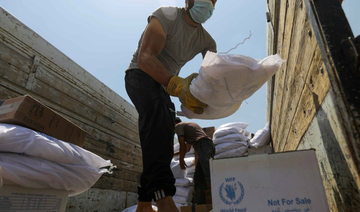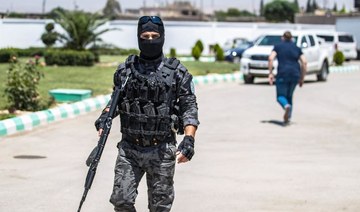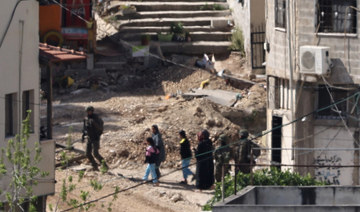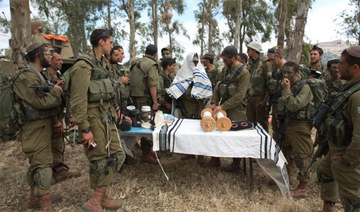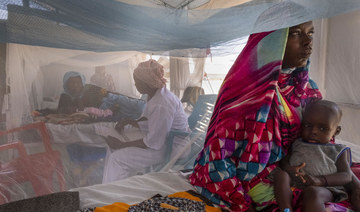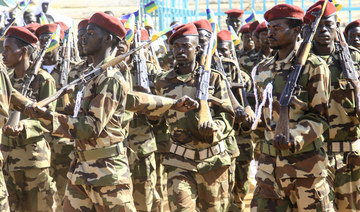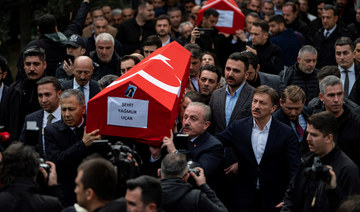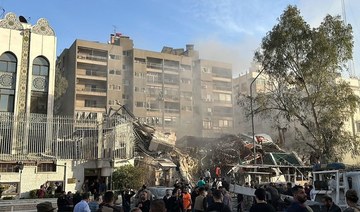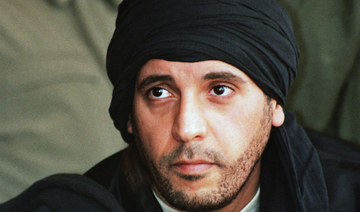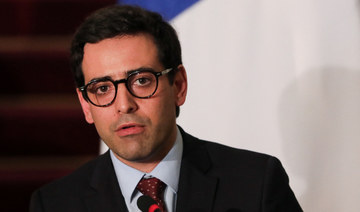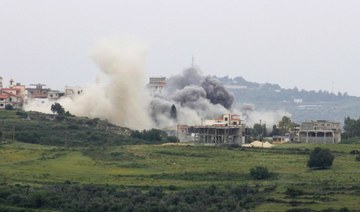JEDDAH: Fears are growing of a resurgence of Daesh after a spate of killings at a camp in northeast Syria that houses extremist fighters’ families.
At least eight people were shot dead last month in the sprawling tent city of Al-Hol in Hasakeh province. They included a 16-year-old Iraqi refugee and two Syrian sisters aged 17 and 23.
Daesh cells inside Al-Hol were carrying out “killings of residents who distance themselves from the extremist ideas of the group,” the Kurdish-led Syrian Democratic Forces said.
The SDF said in April there had been 47 killings in Al-Hol in the first three months of the year, and they had captured 125 Daesh members in a security sweep in the camp.
The UN has warned of radicalization inside the camp, which houses about 50,000 Syrian and Iraqi refugees, mostly women and children, and has a separate annex holding about 10,000 other women and children linked to Daesh members.
Syria’s Kurds hold thousands of Daesh fighters in jails, and their relatives in camps, after expelling the militants in 2019 from the last patch of the territory they controlled.
The Kurdish authorities have repeatedly urged the international community to repatriate their nationals, but most countries have so far taken back only some of the children.
Beyond the camps, the International Committee of the Red Cross has sounded the alarm over the Kurdish authorities holding “hundreds of children” in adult prisons. The Kurds responded by urging international help to set up more rehabilitation centers for minors linked to the extremists.
Killings spark fear of Daesh resurgence
https://arab.news/5xgm3
Killings spark fear of Daesh resurgence
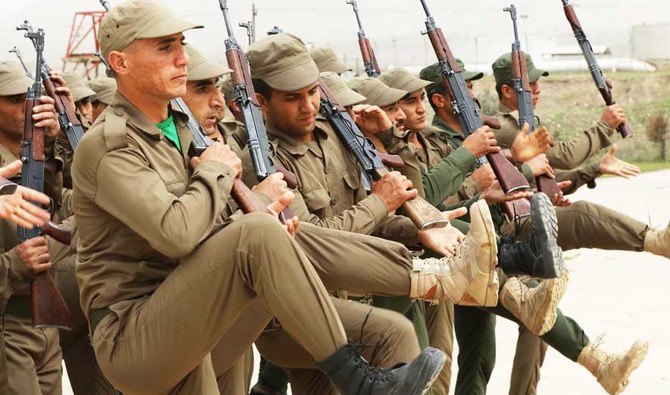
- Daesh cells inside Al-Hol are carrying out ‘killings of residents who distance themselves from the extremist ideas of the group
US says five Israeli military units committed abuses in West Bank
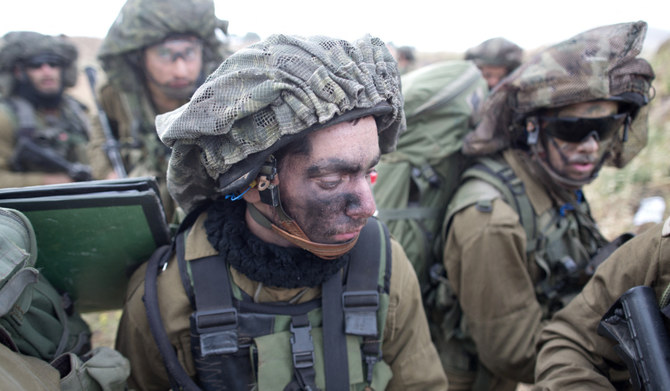
- Israel has killed more than 34,000 Palestinians, according to Gaza’s Health Ministry
- Press reports have identified a battalion called the Netzah Yehuda, composed mainly of ultra-Orthodox Jews, as being accused of abuses. It is about 1,000-strong and since 2022 has been stationed in the West Bank, which Israel has occupied since 1967
WASHINGTON: The United States has concluded that five Israeli security force units committed serious human rights violations against Palestinians in the West Bank before the Hamas attack in October, the State Department said Monday.
Israel has taken remedial measures with four of these units, making US sanctions less likely. Consultations are under way with Israel over the fifth unit, State Department deputy spokesman Vedant Patel told reporters.
He declined to identify the units, give details of the abuse, or say what measures the Israeli government had taken against them.
A US official speaking on condition of anonymity said the fifth unit is part of the army.
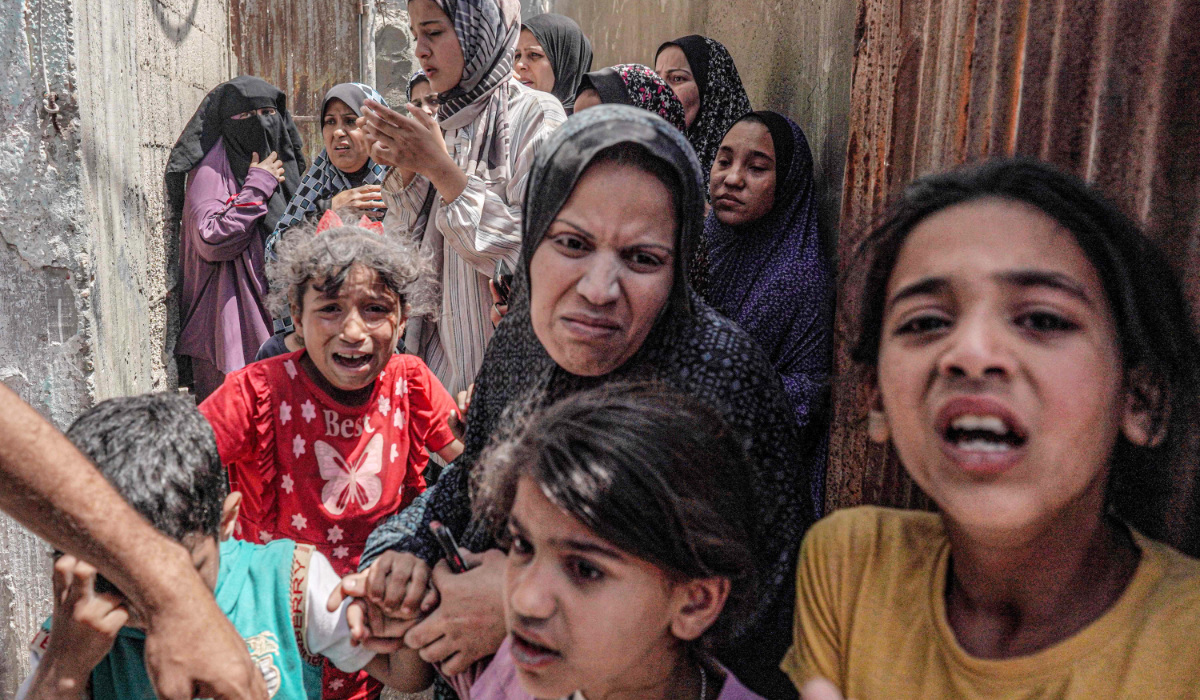
Press reports have identified a battalion called the Netzah Yehuda, composed mainly of ultra-Orthodox Jews, as being accused of abuses.
It is about 1,000-strong and since 2022 has been stationed in the West Bank, which Israel has occupied since 1967.
“After a careful process, we found five Israeli units responsible for individual incidents of gross violations of human rights,” Patel said.
All the incidents took place before the October 7 Hamas attack and were not in Gaza, he added.
“Four of these units have effectively remediated these violations, which is what we expect partners to do, and is consistent with what we expect all countries whom we have a secure relationship with,” said Patel.
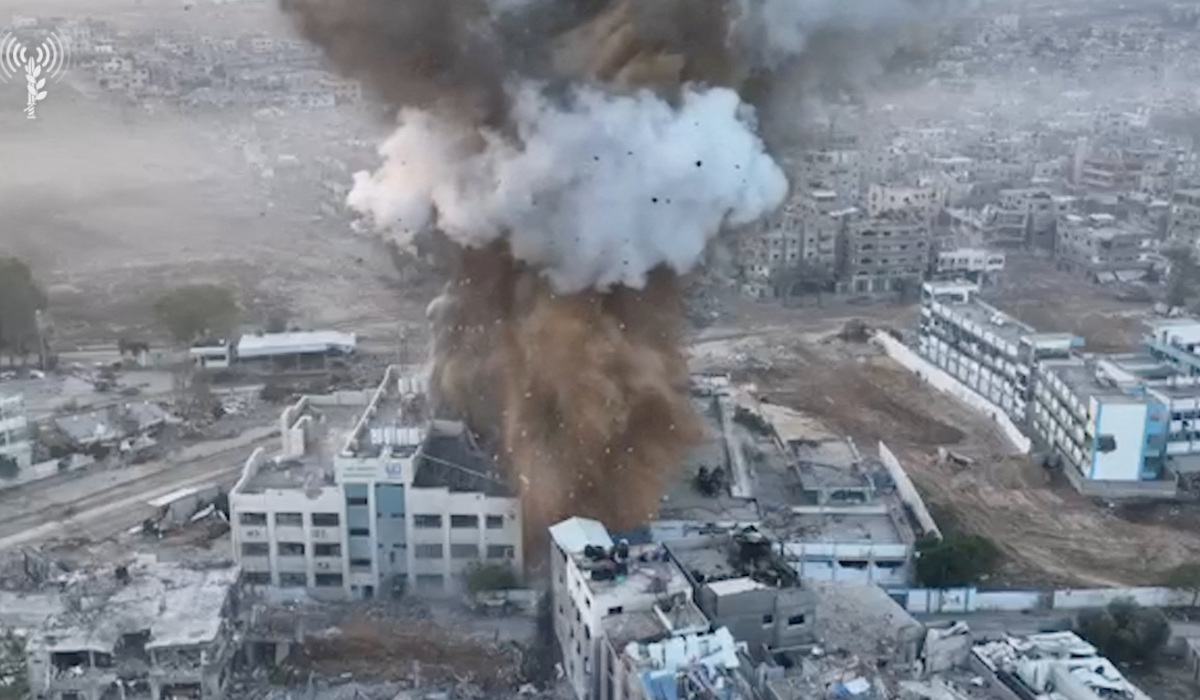
Israel has provided “additional information” about the fifth unit, he added.
US law bars the government from funding or arming foreign security forces against which there are credible allegations of human rights abuses.
The United States provides military aid to allies around the world, including Israel.
The Israeli army has been fighting the militant Palestinian group Hamas in the Gaza Strip for almost seven months and is trading fire almost every day with Hezbollah along the border with Lebanon. Both groups are backed by Iran.
Prime Minister Benjamin Netanyahu reacted angrily to recent news reports that the United States might slap sanctions against a unit of the Israeli military because of human rights abuses, saying the army should not be punished with the country at war.
Patel said the United States is continuing its evaluation of the fifth army unit and has not decided whether to deny it US military assistance.
This case comes with the administration of President Joe Biden under pressure to demand accountability from Israel over how it is waging war against Hamas, with such a high civilian death toll.
In an election year, more people are calling for the United States to make its billions of dollars in annual military aid to Israel contingent on more concern for Palestinian civilians. Pro-Palestinian protests are also sweeping US college campuses.
Hamas’ October attack in Israel resulted in the deaths of about 1,170 people in Israel, mostly civilians, according to an AFP tally based on Israeli official figures.
Israel’s retaliatory offensive has killed at least 34,488 people in Gaza, mostly women and children, according to the health ministry in the Hamas-run territory.
US warns of ‘large-scale massacre’ in Sudan city
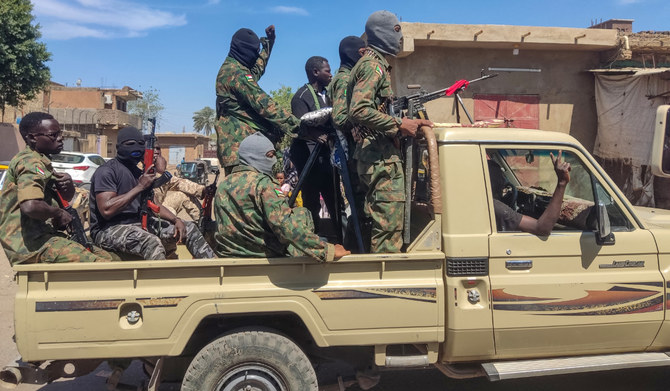
- Millions have been displaced in the country since fighting began last year between the SAF forces of General Abdel Fattah Al-Burhan and RSF paramilitaries under General Mohamed Hamdan Dagalo
UNITED NATIONS, United States: The US ambassador to the United Nations on Monday warned of an impending “large-scale massacre” in the Sudanese city of El-Fasher, a humanitarian hub in the Darfur region.
The city had until recently been relatively unaffected by fighting between the Sudanese Armed Forces (SAF) and the Rapid Support Forces (RSF), but bombardment and clashes have been reported both there and in surrounding villages since mid-April.
El-Fasher “is on the precipice of a large-scale massacre. This is not conjecture. This is the grim reality facing millions of people,” Linda Thomas-Greenfield told journalists following a UN Security Council meeting on Sudan.
“There are already credible reports that the RSF and its allied militias have razed multiple villages west of El-Fasher, and as we speak, the RSF is planning an imminent attack on El-Fasher,” which “would be a disaster on top of a disaster,” Thomas-Greenfield said.
Millions have been displaced in the country since fighting began last year between the SAF forces of General Abdel Fattah Al-Burhan and RSF paramilitaries under General Mohamed Hamdan Dagalo.
El-Fasher functions as the main humanitarian hub in the vast western region of Darfur, home to around a quarter of Sudan’s 48 million people.
Why Syria’s wars fell off the radar despite continued crisis and suffering
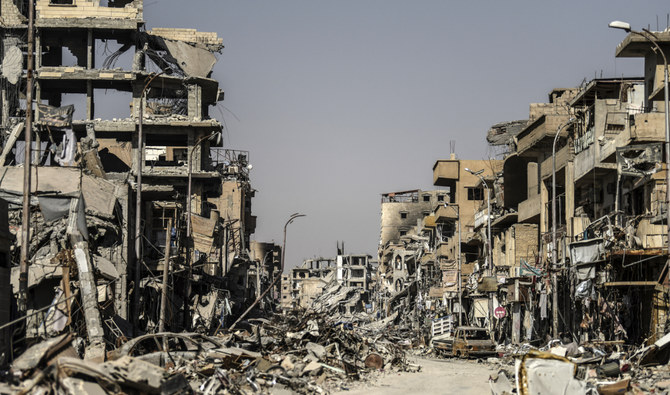
- Media focus on the Gaza war and its spillovers has further reduced visibility of the Syrian conflict, say analysts
- Despite ongoing fighting and displacement, Syria is viewed through the lens of the Israel-Iran stand-off
LONDON: More than 13 years have passed since the onset of Syria’s brutal civil war, with millions of Syrians continuing to endure displacement, destitution, and even renewed bouts of violence, with no political resolution in sight.
And yet, with the world preoccupied with simultaneous crises in Gaza and Ukraine, Syria’s plight seems to have faded into the background, becoming a mere sideshow in Iran and Israel’s escalating confrontation.
Omar Al-Ghazzi, an associate professor of media and communications at the London School of Economics, believes “the scale of killing in the genocidal war on Gaza has sadly raised the bar of reporting on human suffering, particularly in Arab countries.
“News media are so saturated with stories of human suffering in Gaza that wars in other countries, such as Syria and Sudan, get much less coverage,” he told Arab News. “This shows how mass killing in Gaza cheapens human life everywhere.”
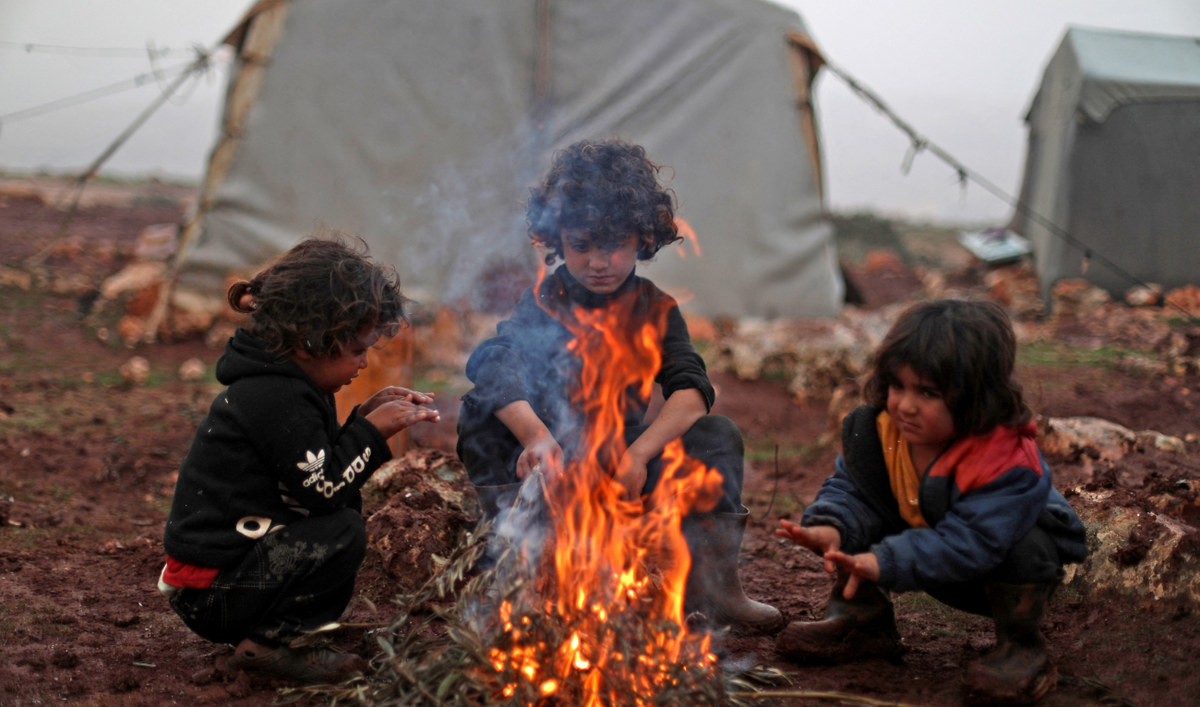
Israel’s military campaign in Gaza, launched in retaliation for the Oct. 7 Hamas-led attack on southern Israel, has killed more than 34,000 people, according to Gaza’s health ministry, and displaced more than 90 percent of the enclave’s population.
Nanar Hawach, a senior Syria analyst at International Crisis Group, concurred, saying that “international reporting on the Middle East is focused on the Gaza war and its spillover to regional countries, which has further reduced the visibility of the Syrian conflict.
“A status quo has prevailed in Syria since 2020,” he told Arab News. “With frozen front lines and a stalled peace process, there is little progression or change to draw renewed attention.”
Since Oct. 7, media attention has focused almost exclusively on Israeli attacks on Syrian targets, including Iran’s interests in the country.
One recent Syria-related incident that gripped the world’s attention was the suspected Israeli strike on the Iranian Embassy’s annex in Damascus, which killed Quds Force commander Mohammad Reza Zahedi and his deputy.

“In terms of geopolitics, the status quo in Syria seems to have settled on a hum of internal warfare,” said Al-Ghazzi. “News media are only interested in the Syria story if it affects the stand-off between Iran and Israel.
“There are also regional and international actors who are interested in portraying Syria as a safe country for the resettlement of refugees, which may also explain the lack of appetite in covering ongoing warfare there.”
There are currently more than 5 million Syrian refugees living outside the country, while at least 7.2 million others are internally displaced, according to UN figures.
Neighboring host countries, including Turkiye, Lebanon and Jordan, have been pushing Syrian refugees to return, often involuntarily, claiming the war has ended and that their areas are now safe. Others have normalized relations with the Bashar Assad regime.
But the reality on the ground is grim, offering little hope for safe refugee repatriation.
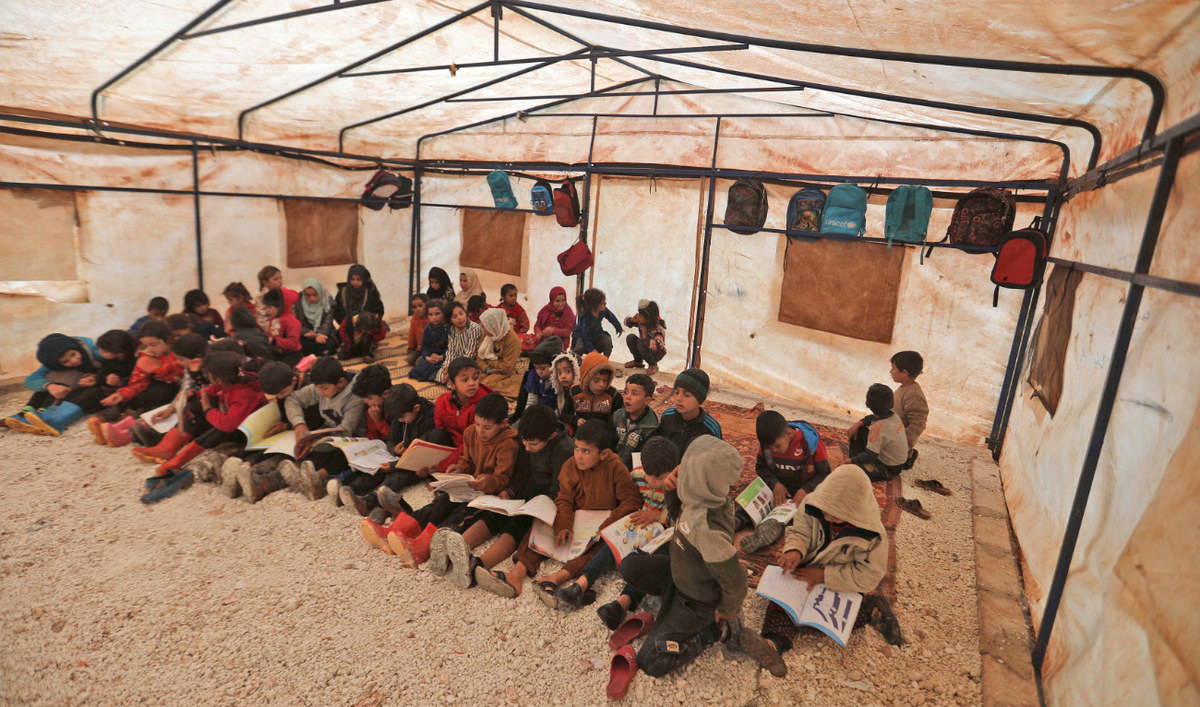
Syrians inside the country continue to endure many hardships, made worse by economic pressures, persecution by armed factions, and the aftermath of the Feb. 6, 2023 twin earthquakes that devastated parts of the north.
Anti-government protests in the southern Druze-majority city of Suweida have been ongoing since August due to deteriorating economic conditions, with smaller demonstrations also taking place in Daraa.
Syria has also been “facing a massive upsurge in violence” on several fronts since September last year, according to Louis Charbonneau, the UN director at Human Rights Watch.
In an interview last month with Erbil-based media agency Rudaw, Charbonneau said that Syria has seen “a severe increase in attacks on civilians.”
In late April, Syrian regime forces clashed with what the country’s defense ministry referred to as a “terrorist group” that attempted an attack on a military post near Idlib in the country’s opposition-held northwest.
INNUMBERS
102 Civilians, including 11 children and 14 women, killed in March, according to The Syrian Network for Human Rights.
5 Individuals who died of torture in March in Syria, the SNHR said.
Meanwhile, a senior official at a Russian center in Syria, Rear Adm. Vadim Kulit, told news agencies his country’s aircraft destroyed “two sites serving as bases for fighters taking part in the shelling of Syrian government forces. More than 20 terrorists were liquidated.”
Kulit also said Syrian regime forces lost a soldier a day earlier when they came under fire from militants in Latakia.
In the southern governorate of Daraa, where the uprising against the regime began in 2011, a series of explosions has kept residents in a constant grip of anxiety.
The most recent of these took place in early April, when an explosive device “planted by terrorists” in the city of Sanamayn killed seven children, according to state media. Local militia leader Ahmad Al-Labbad was accused of planting the bomb, with the explosion sparking clashes the following day between rival armed groups in Daraa.
Twenty people were killed in the subsequent fighting, including three of Al-Labbad’s family members and 14 of his fighters, according to the UK-based Syrian Observatory for Human Rights.

In northern Syria, the Turkish-backed Syrian National Army militia and its Military Police have been accused by Human Rights Watch of committing human rights abuses in the areas under their control.
The SNA invaded the Afrin and Ras Al-Ain regions, territories that had previously been a part of the Kurdish-led Autonomous Administration of North and East Syria, in 2018 and 2019, respectively.
Noting the “clear, intentional demographic changes in Afrin,” Charbonneau said in his interview with Rudaw that the SNA has been “removing Kurds who are living in these areas and then replacing them with Arabs who were living in other parts of Syria.”
A report published in March by the UK-based Syrian Network for Human Rights also claims that the US-backed and Kurdish-led Syrian Democratic Forces have been targeting areas in the Aleppo governorate with “indiscriminate and disproportionate shelling” in “a clear violation of international humanitarian law.”
The report added that the “group’s indiscriminate killings amount to war crimes.”
In Idlib, a suicide bombing early this month in the town of Sarmada killed Abu Maria Al-Qahtani, one of the founders of Al-Nusra Front, which renamed itself Hayat Tahrir Al-Sham after severing ties with Al-Qaeda.
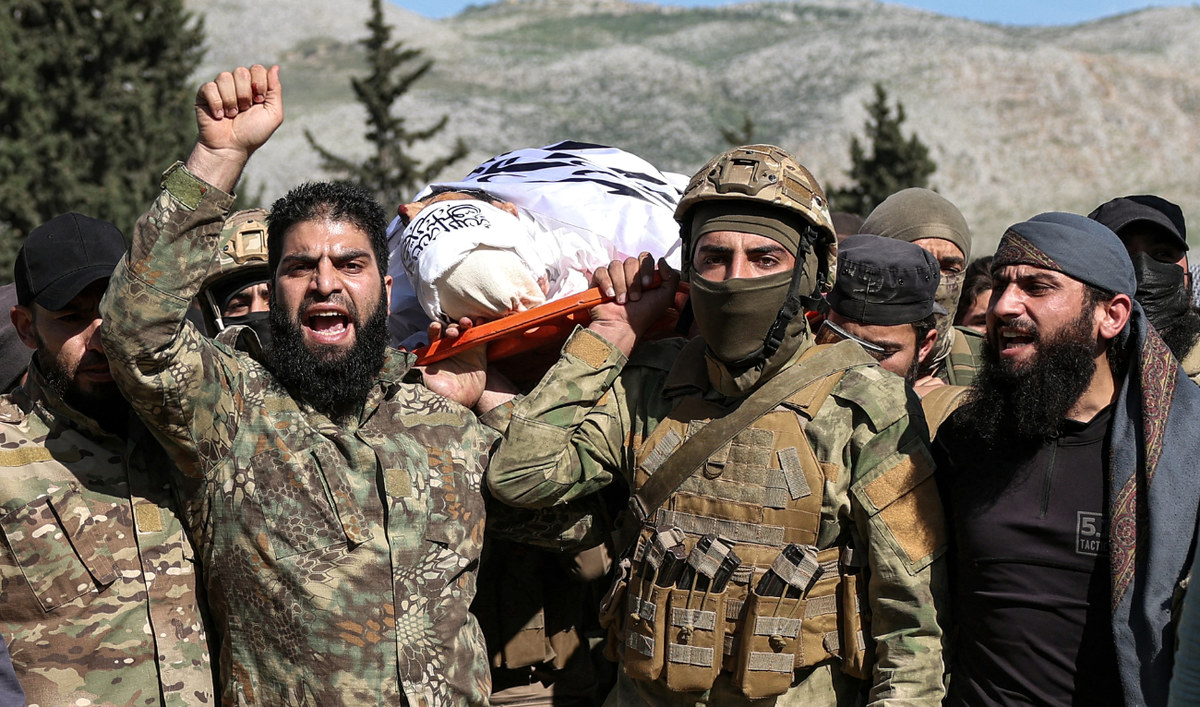
The Syrian Network for Human Rights’ report said that Syrian regime forces in February carried out attacks on armed opposition factions in the rural parts of Aleppo, Idlib, and Hama.
October last year saw a week of intense airstrikes by Syrian regime and Russian forces on Idlib and parts of western Aleppo. This bombing campaign was triggered by a drone attack on a Syrian military academy in Homs, which killed more than 100 people, including civilians.
Reuters had described the attack on the Homs military academy as “one of the bloodiest attacks ever against a Syrian army installation.”
Also in February, US airstrikes targeted regime-controlled areas in Deir ez-Zor governorate, focusing on military outposts hosting pro-regime Iranian militias, the report added.
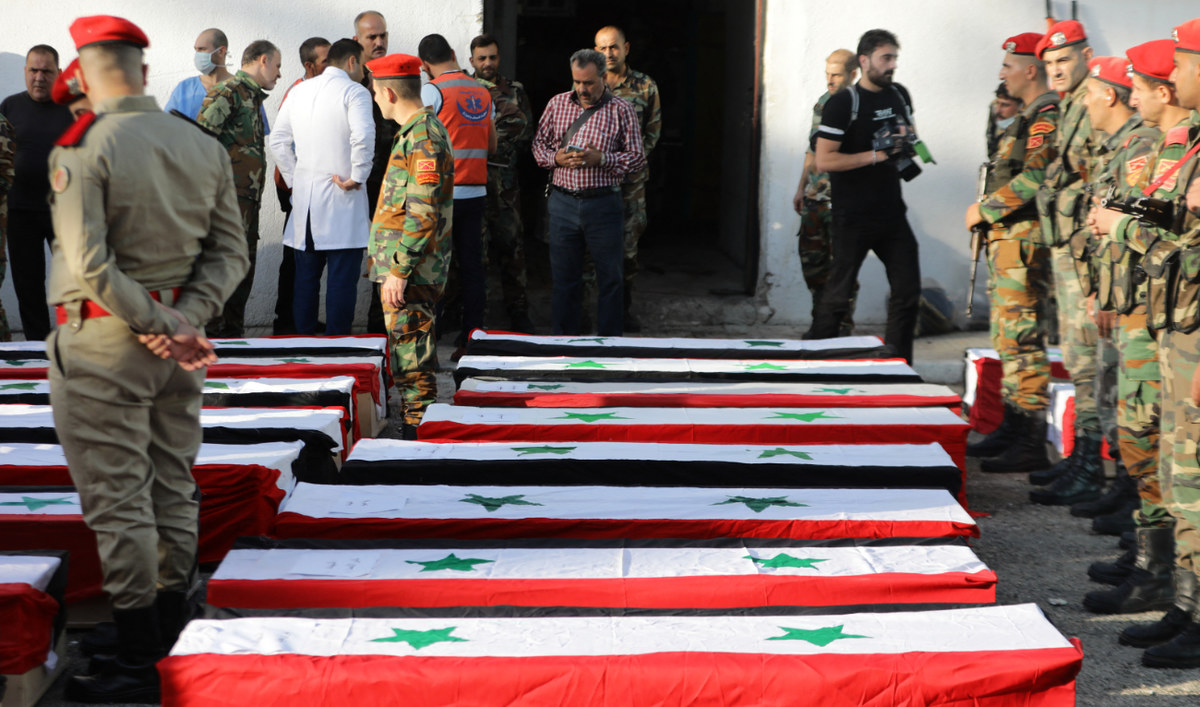
Camille Alexandre Otrakji, a Syrian-Canadian analyst, believes the violence in Syria has slipped from global attention because “many media organizations prioritize what is best for Israel.
“Unfortunately for Syrians, Israel’s interests align with the continuation of conflict in their country,” he told Arab News. “Raising awareness of their suffering can exert pressure on the international community to actively pursue negotiated compromises to end the conflict, which is not in Israel’s interest.
“Western media rarely exhibited an interest in outcomes other than victory for the side they supported and championed.” However, “as that side has largely dissipated, only a disparate collection of unattractive armed groups remains, challenging their common portrayal as the ‘good side.’”
He added: “The novelty and intensity of a conflict influences perceptions of its newsworthiness. The 13-year conflict in Syria peaked years ago, leading to coverage fatigue and a general sense of Syria fatigue among both audiences and activists. Charitable organizations are also experiencing a noticeable decline in donations for Syria.”

Moreover, as social media activists “have realized that their activism or influence does not translate into tangible gains on the ground,” their motivation to continue covering the conflict in Syria “has dramatically declined.”
UN experts believe the only way to end the Syrian conflict is through a political process. But for more than a year, “the intra-Syrian political process has been in deep freeze,” UN Special Envoy for Syria Geir Pedersen said in August.
“A continued stalemate is likely to increase international disengagement,” Hawach of the International Crisis Group told Arab News. “Without significant concessions from Syrian actors and the involved external parties, the Syrian issue risks becoming a forgotten case.”

Libya demands improvements after leaked photos show tiny cell of Muammar Qaddafi’s son in Beirut
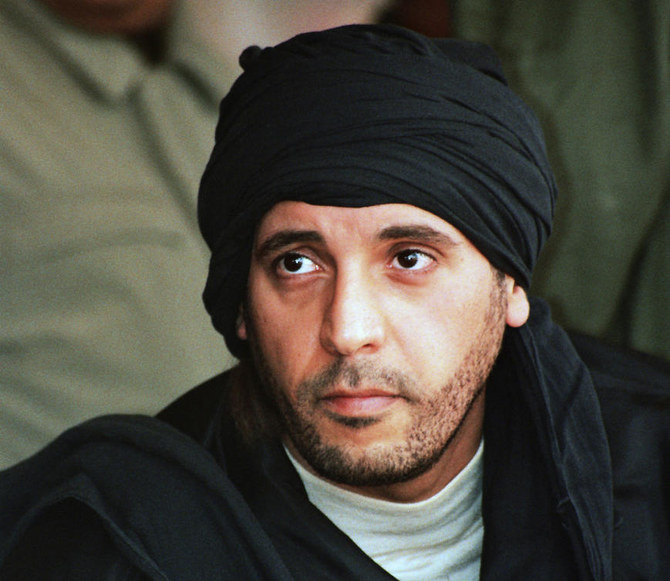
- Hannibal Qaddafi has been held in Lebanon since 2015 after he was kidnapped from neighboring Syria
- Qaddafi was abducted by Lebanese militants demanding information about the fate of prominent Lebanese Shiite cleric Moussa Al-Sadr
BEIRUT: Leaked photographs of the son of Libya’s late dictator Muammar Qaddafi and the tiny underground cell where he has been held for years in Lebanon have raised concerns in the north African nation as Libyan authorities demand improvements.
The photos showed a room without natural light packed with Hannibal Qaddafi’s belongings, a bed and a tiny toilet. “I live in misery,” local Al-Jadeed TV quoted the detainee as saying in a Saturday evening broadcast, adding that he is a political prisoner in a case he has no information about.
Two Lebanese judicial officials confirmed to The Associated Press on Monday that the photographs aired by Al-Jadeed are of Qaddafi and the cell where he has been held for years at police headquarters in Beirut. Qaddafi appeared healthy, with a light beard and glasses.
A person who is usually in contact with Qaddafi, a Libyan citizen, said the photos were taken in recent days. All spoke on condition of anonymity because they were not authorized to speak to media outlets.
Qaddafi has been held in Lebanon since 2015 after he was kidnapped from neighboring Syria, where he had been living as a political refugee. He was abducted by Lebanese militants demanding information about the fate of prominent Lebanese Shiite cleric Moussa Al-Sadr, who went missing during a trip to Libya in 1978.
The fate of Al-Sadr has been a sore point in Lebanon. His family believes he may still be alive in a Libyan prison, though most Lebanese presume Al-Sadr, who would be 95 now, is dead.
A Libyan delegation visited Beirut in January to reopen talks with Lebanese officials on the fate of Al-Sadr and the release of Qaddafi. The talks were aimed at reactivating a dormant agreement between Lebanon and Libya, struck in 2014, for cooperation in the probe of Al-Sadr. The delegation did not return to Beirut as planned.
The leaks by Al-Jadeed came after reports that Qaddafi was receiving special treatment at police headquarters and that he had cosmetic surgeries including hair transplants and teeth improvements. Al-Jadeed quoted him as saying: “Let them take my hair and teeth and give me my freedom.”
Qaddafi went on a hunger strike in June last year and was taken to a hospital after his health deteriorated.
Libya’s Justice Ministry in a statement Sunday said Qaddafi is being deprived of his rights guaranteed by law. It called on Lebanese authorities to improve his living conditions to one that “preserves his dignity,” adding that Lebanese authorities should formally inform the ministry of the improvements. It also said Qaddafi deserves to be released.
After he was kidnapped in 2015, Lebanese authorities freed him but then detained him, accusing him of concealing information about Al-Sadr’s disappearance.
Al-Sadr was the founder of the Amal group, a Shiite militia that fought in Lebanon’s 1975-90 civil war and later became a political party that is currently led by the country’s Parliament Speaker Nabih Berri.
Many of Al-Sadr’s followers are convinced that Muammar Qaddafi ordered Al-Sadr killed in a dispute over Libyan payments to Lebanese militias. Libya has maintained that the cleric, along with two traveling companions, left Tripoli in 1978 on a flight to Rome.
Human Rights Watch issued a statement in January calling for Qaddafi’s release. The rights group noted that Qaddafi was only 2 years old at the time of Al-Sadr’s disappearance and held no senior position in Libya as an adult.
French FM in Beirut submits new peace proposal
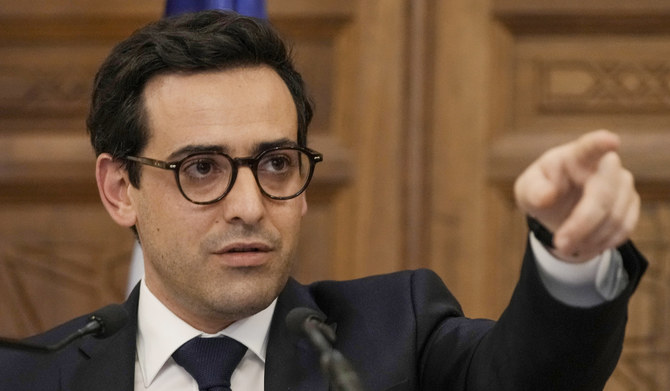
- ‘We are working to avoid Lebanon being ravaged by a regional war,’ says Stephane Sejourne
BEIRUT: The French foreign minister has submitted a new peace proposal in Beirut aimed at ending months of violence between Hezbollah and Israel.
Stephane Sejourne met officials in Beirut on Sunday, calling on the warring parties to abide by UN Resolution 1701.
After the talks, he said: “War exists even if not explicitly named. Civilians are paying the price, and no one is interested in the continuing escalation. This is the message I conveyed here, and this is the message I will convey on Tuesday to Israel.”
The minister discussed an amendment to a proposal Paris had presented to Lebanon for a diplomatic resolution to the conflict.
UN Resolution 1701, which brought an end to the brutal Israel-Hezbollah war in 2006, is widely viewed as the most suitable framework for ending the latest conflict.
However, Hezbollah has persisted with linking its strikes on Israel to events in the Gaza Strip, while the Lebanese state has reminded Israel of its obligation to Resolution 1701 following repeated violations.
On Monday, reports said that a French technical team would bring the revised French initiative to Lebanese authorities within 48 hours. Parliament Speaker Nabih Berri was notified by Sejourne about the update.
The proposal will be delivered to Lebanon through diplomatic channels, said the French minister, who left Lebanon on Sunday night following his visit.
The revised version of the French initiative contains several pillars, including the cessation of hostilities between Hezbollah and the Israeli army under UN Resolution 1701.
It also calls for the safe return of Israelis to northern settlements and Lebanese citizens to border towns in the south.
Additionally, the initiative calls for deploying more Lebanese military forces across border areas and strengthening the UN peacekeeping mission in Lebanon, UNIFIL.
The earlier version of the French peace plan, sent to Lebanon in mid-March, called for Hezbollah and its allies to retreat 10-12 km from the border. It also urged Israel to avoid “air violations.”
While in Beirut, Sejourne advised Berri to prioritize the election of a president before finalizing negotiations on the situation in the south.
Establishing a governing authority and ensuring presidential involvement in negotiations with Israel was “important,” he said.
Berri presented Sejourne with a map from the Scientific Research Institute that detailed the extensive damage and losses caused by Israeli military operations in southern Lebanon.
The map said that Israeli phosphorus bombings had affected “an area of 10 million sq meters.”
In addition, since the low-level conflict began last October, 1,000 housing units have been destroyed and thousands partially damaged.
Israeli operations have caused “significant harm to the environment and agriculture,” an infographic said.
After his talks in Lebanon, the French foreign minister said: “The crisis has lasted a long time. We are working to avoid Lebanon being ravaged by a regional war.
“We call on all parties to exercise restraint, and we reject the worst scenario in Lebanon, which is war.”
The UNIFIL operational region in Lebanon saw no activity on Sunday morning, after months of hostilies between Hezbollah and Israel in the area.
It coincided with Sejourne’s visit to UNIFIL headquarters in Naqoura, where he was briefed on the border situation by commander Gen. Aroldo Lazaro.
Sejourne also inspected the work of French peacekeepers serving with UNIFIL.
Meanwhile, Israeli military drones launched two missiles toward Aita Al-Shaab on Monday.
Other Israeli military drones raided Khiam, following a night of heavy shelling on Lebanese border villages, including Aita Al-Shaab, Kfarkila, Tayr Harfa, Naqoura and Jabal Blat.
Hezbollah said it targeted “a gathering of Israeli soldiers in the vicinity of the Ruwaizat Al-Alam site with artillery shells.”
Residents in southern Lebanon have claimed that the Israeli army is deploying “a new type of heavy artillery.”
One resident told Arab News: “The whole region shakes and the ground trembles under our feet from the border until Nabatieh as if they were using seismic, thermobaric missiles.”
The morning Israeli strikes were a response to the interception of “over 30 missiles launched from southern Lebanon toward the Galilee panhandle and the upper Galilee,” according to Israeli media.
The Al-Qassam Brigades — the military wing of Hamas — said in a statement that its Lebanon branch had targeted the headquarters of Israel’s 769th Eastern Brigade.
The group launched a salvo of rockets from southern Lebanon, describing the attack as a response to “Israel’s massacres in Gaza and the West Bank.”



